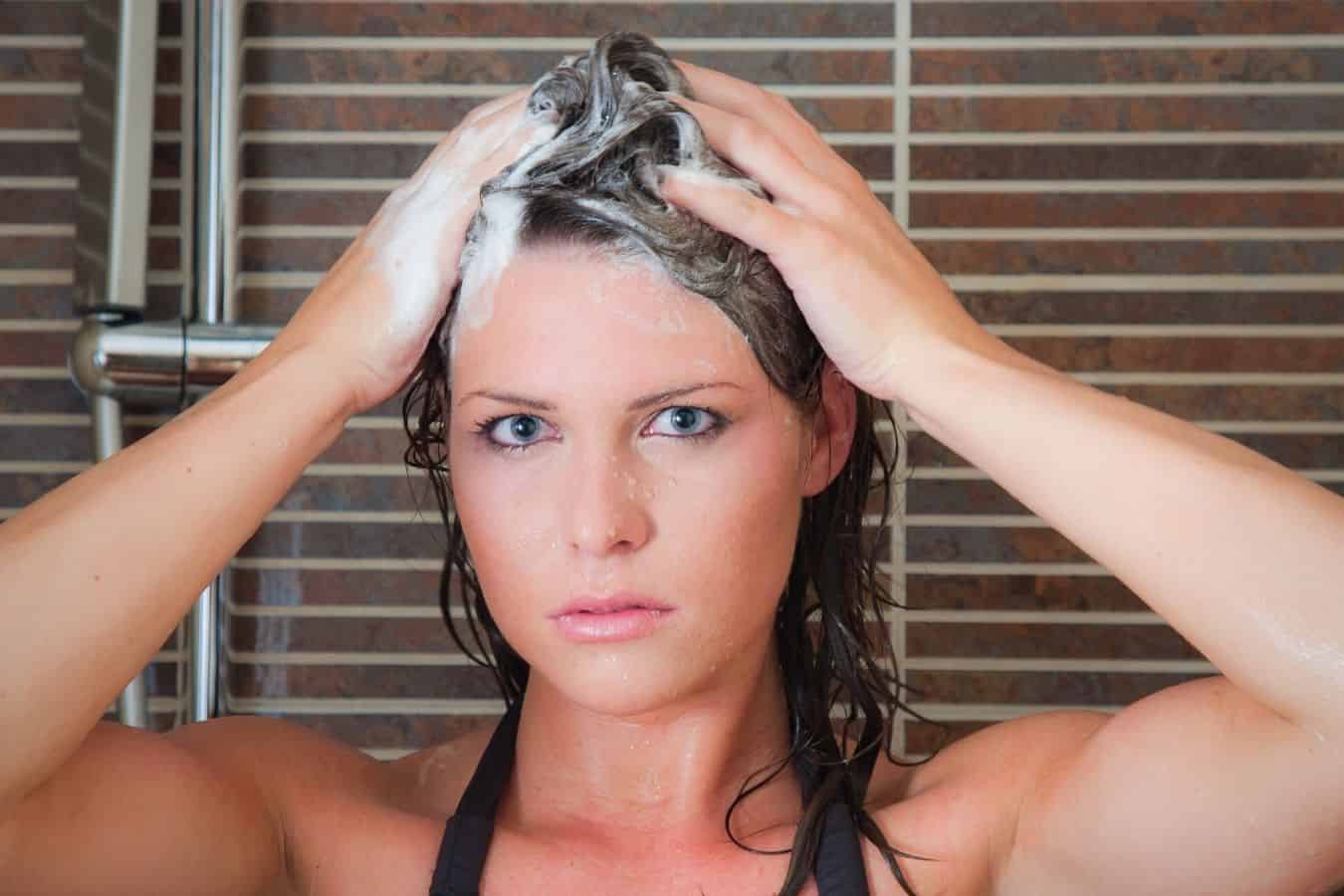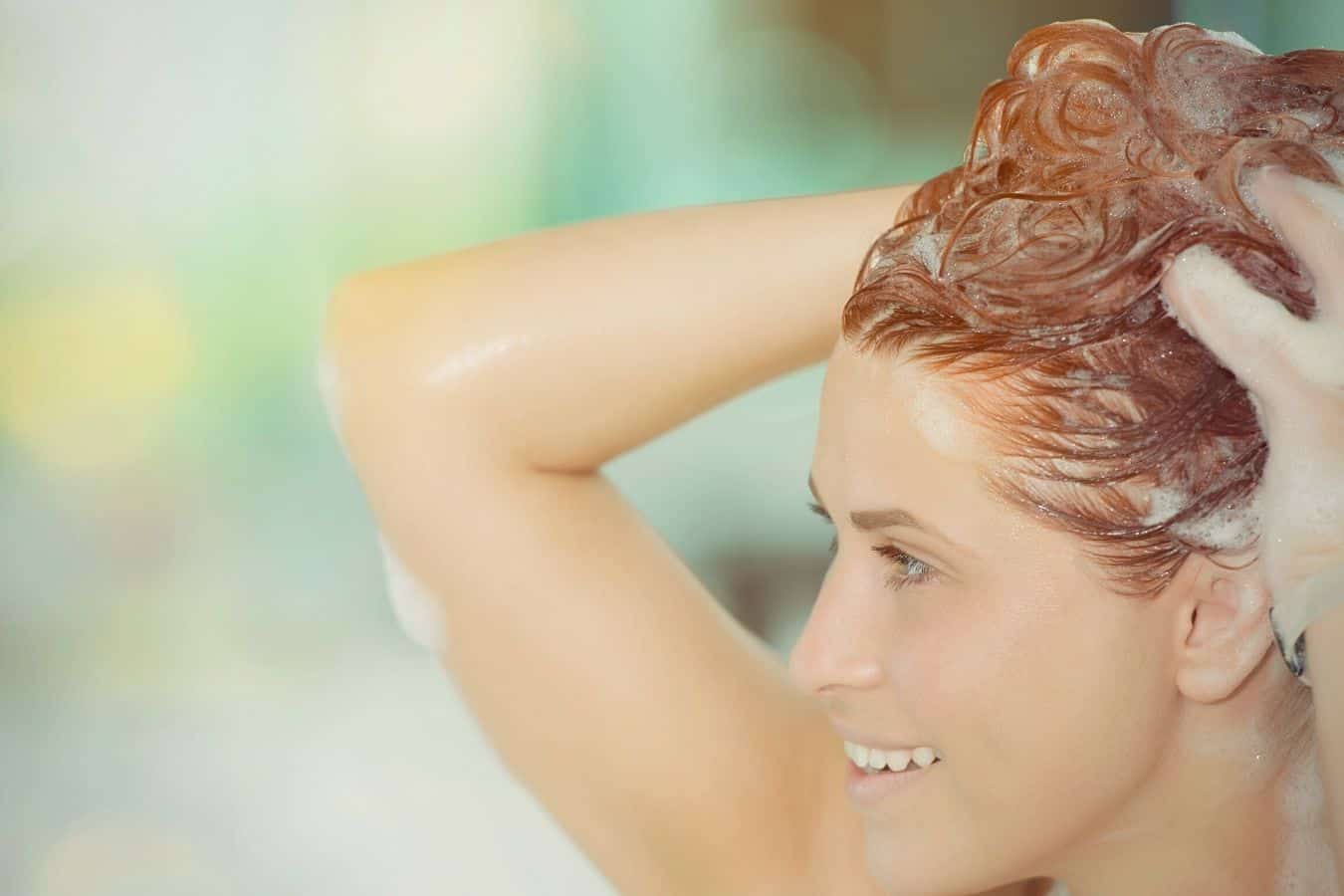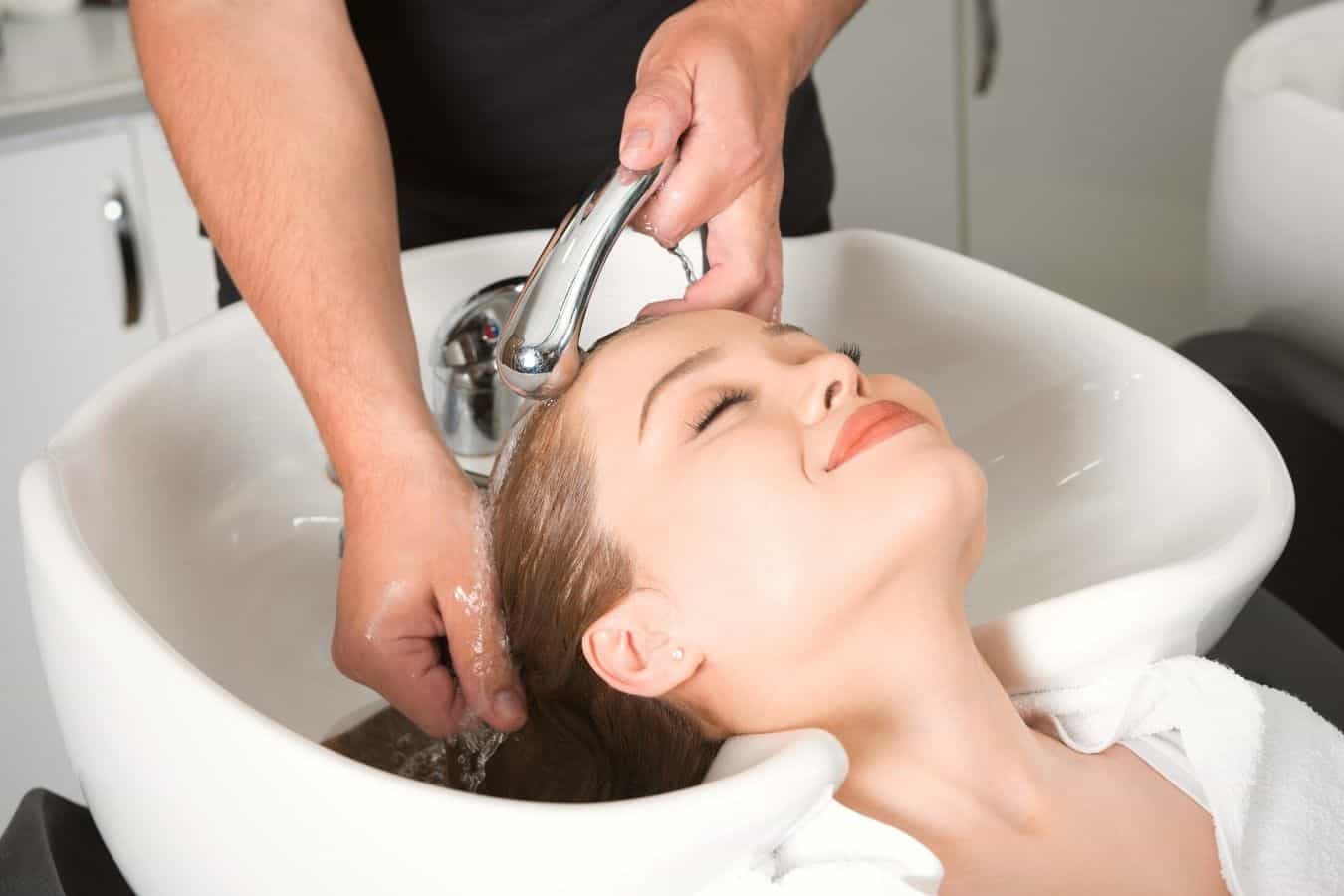Silicones are a common ingredient found in hair care products. They have many advantages for the hair, but can also cause build-up over time. This article will take a look at the best ways to remove silicone build-up from hair.

The simplest way to remove silicone from hair is to use a shampoo that contains surfactants. Surfactants are powerful cleansers that will strip the silicone right out of your hair. You could try a regular sulfate shampoo or a clarifying shampoo, or even dish soap will work in a pinch.
What Are Silicones?
Silicones are derived from a mineral called silica, which makes up a significant portion of the Earth’s crust and are commonly used ingredients in hair care products.
You can spot them on the label easily because they usually end in “siloxane” or “cone”.
Some examples of silicones used in hair products are:
- Amodimethicone
- Cyclomethicone
- Dimethicone
- Phenyl trimethicone
- Cyclohexasiloxane
- Cyclopentasiloxane
What Benefits Does Silicone Have for Hair?
Silicones are unable to penetrate the hair. Instead, they just coat the hair shaft. The benefits of silicones for hair are:
- They soften the hair
- They make hair easier to style
- They seal split ends
- They smooth the cuticle, leaving your hair shinier
- They serve as a heat protectant
Silicones are frequently found in conditioners, as they coat the hair, lessening frizz and providing softness and shine.
But they can be found in other types of hair products too, including shampoos and styling sprays.
Can Silicones Be Bad For Hair?
As we have seen, silicones can provide several advantages for the hair.
However, it is possible to have too much of a good thing.
Silicones are unable to penetrate the hair shaft. Instead, they just coat it. While this has protective qualities for the hair, it can, over time, cause build-up.
But it’s important to note that not all silicones are alike. Some types, like Cyclomethicone, evaporate from your hair pretty quickly, so they never cause build-up.
Heavier types of silicone, like dimethicone, will stay on your hair until you wash it off.
If you wash your hair regularly, with a shampoo that contains surfactants, this shouldn’t be a problem for you.
But, if you wash your hair less frequently and use a lot of styling products, you may over time find yourself dealing with silicone build-up.
Silicone build-up can result in hair becoming heavy, dry and dull-looking. Over time, it may lead to your hair becoming weaker and more prone to breakage.
It is important to note, however, that silicone is not a toxic chemical. Silicone itself is not harmful to the hair. Only the effects of silicone build-up are harmful if left unchecked.
Fortunately, silicone build-up can be easily washed out using the right products.
Also Read: 5 Important Chemicals To Avoid In Shampoo (And Why)
Do I Have Silicone Build-up?

You’ll know if you do. You’ll find that your hair starts feeling heavy, looks greasy, and loses its volume.
Don’t worry – your hair isn’t damaged. You just need to wash the silicones out of it with a good shampoo.
If you’re not experiencing any of these symptoms, then you don’t need to worry about the silicones in your hair products.
As a general rule, if you tend to wash your hair every couple of days and don’t really use any products beyond shampoo and conditioner, you’re probably fine.
Any silicones on your hair from the conditioner will get washed off the next time you wash your hair.
But if you wash your hair less often, and use a lot of products in-between washes, then sooner or later you’re likely to find yourself dealing with silicone build-up.
How to Remove Silicone from Hair
Here are the easiest and most reliable ways you can remove silicone build-up from your hair:
Method 1: A Shampoo With Surfactants
Forget co-washing or no poo. The only way you’re going to get those silicones out of your hair is with a good old-fashioned shampooing.
You’ll need to use a shampoo that has surfactants in it. Surfactants are powerful cleansers that are able to strip away oils, dirt, and silicones.
Surfactants sometimes have the reputation of being harsh and irritating, and of drying out the hair.
This is especially true of sodium lauryl sulfate (SLS), but this is an ingredient that is not widely used in shampoos anymore.
Instead, look for its milder counterpart, sodium Laureth sulfate, which is gentler on the hair and scalp.
You could also look for other gentler cleansers like ammonium laureth sulfate, or Cocamidopropyl betaine.
For best results, ensure you use a shampoo that does not contain silicones, as this would be counter-productive.
If you use a shampoo that contains surfactants regularly, you will no longer be troubled by silicone build-up.
Method 2: Clarifying Shampoo
If you’re very concerned about silicone build-up, your best bet is to turn to a clarifying shampoo.
Clarifying shampoos have a greater concentration of surfactants than regular shampoos.
They are powerful cleansers yet are safe to use on your hair provided you don’t use them too often.
They are a good way of hitting the reset button on your hair and starting from scratch.
It’s best to use clarifying shampoos once a month as part of your routine to effectively remove build-up on your hair.
After using a clarifying shampoo, you could use a silicone-free deep conditioning treatment on your hair to restore nutrients and moisture.
Method 3: Dish Soap
It may sound weird, but if you don’t want to fork out on a new shampoo, dish soap will also do the job of removing silicones from your hair, as it is a powerful cleanser.
It seemed worth a mention, as some women use dish soap to ‘chelate’ the hair pre-coloring, or as a hair-growth aid.
Just be aware that it will dry out the hair somewhat, so be ready to follow it up with a deep-conditioning treatment.
Can You Remove Silicone Without Harsh Chemicals?

You may be aware that regular use of sulfate shampoos can be drying for the hair.
This is why many women choose not to wash their hair every day, and why the co-wash method has gained popularity in recent years.
However, there’s no denying that sulfate shampoos do a good job of cleansing the hair and there’s no harm in using them at least occasionally to detox the hair and scalp.
They are arguably the most reliable and gentlest chemical method of removing silicone build-up from the hair.
You’ve probably seen some “organic” options for removing silicones online. Let’s run through these options and cover the pros and cons.
Also Read: 17 Glycerin Free Hair Products For All Hair Types
Vinegar
Vinegar is often recommended as a sulfate-free option to remove silicones from the hair.
The problem is, vinegar is simply not strong enough to remove silicones from hair.
If you had 100% pure glacial acetic acid (which is the core component of vinegar), it would probably remove the silicone from your hair, but it would also remove your hair (and skin)!
Baking Soda
Baking soda is abrasive and good for scrubbing pots and pans, but it’s no good for removing silicones from hair as it has no surfactant properties. It’s also very drying and damaging when used on hair.
Olive Oil/Vegetable Oil/Peanut Butter
All of these oily substances that can be found in your kitchen won’t work, as the oil won’t be able to penetrate the silicone.
Mineral Spirits
These are organic solvents used for removing all kinds of chemicals, commonly used as a paint thinner.
While they would definitely remove silicone from the hair, they are not safe to use on the hair or skin, so avoid it.
The best option if you want to avoid using sulfates on your hair is just to give it time.
Most silicones evaporate over time and will be gone within the course of a day, or even a few hours, depending on the types of silicone used.
If you want to avoid the problem of silicone build-up, simply use fewer products containing silicones, or layer up fewer products that contain silicones.
It is also an option to avoid silicones altogether.
Benefits Of Using Silicone Free Products
Not everyone likes to use surfactants to clean their hair. Maybe you’re sensitive to certain ingredients, or silicone build-up is a concern for you.
It’s also true that silicones prevent moisture from penetrating the hair, so if you’ve used a silicone conditioner and follow up with vitamin-infused hair oil, the hair oil is not going to be very effective.
One way of countering this problem is by using fewer silicone hair products or cutting them out altogether.
There are many plant-based, natural moisturizers you can use which will give your hair the same softness and shine as silicone, without the problem of build-up.
For example, you could try:
- jojoba oil
- shea butter
- aloe vera
There are many hair products on the market these days, many of which are made with 100% organic ingredients.
Just double-check the label as some products are marketed as “silicone-free”, when in reality this means they don’t contain any of the “bad” silicones.
So always double-check the ingredients list to be sure the product is free of anything ending with the relevant suffixes.
Whether you use silicones or not is a personal decision. There is no right or wrong here – it all depends on your hair type and your hair care routine.
If silicone build-up is an issue for you, you could try reducing your use of silicone products, changing your shampoo, or eliminating silicones altogether.
There is so much choice when it comes to hair products these days, it is just a case of experimenting to find out what works best for you.
Disclaimer: This site is not intended to provide professional or medical advice. All of the content on LovedByCurls.com is for informational purposes only. All advice should be followed at your own discretion. Ingredients may change at any time so always check the product label before using. Check our full disclaimer policy here.
